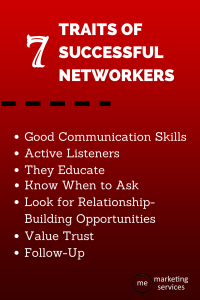
If you are not currently using social networks, you might be asking, “What is social networking doing that helps businesses?” The answer is a huge amount if it is used properly. Savvy entrepreneurs are promoting their products and services in unique and creative ways; businesses are expanding their customer base substantially through the use of all major networking sites. If you are not using these sites, you need to get “on board” immediately. If you don’t know how to get “on board,” get some professional help to do so.
General Social Networking Tips
1. Identify the best sites for your business niche. Not every social media site is for all businesses. For a company that is manufacturing specific machine parts for certain other manufacturers, establishing a Facebook and Pinterest presence will not yield great results. This company, however, should have a LinkedIn and a Sunzu profile page. There, it will make appropriate contacts. To find the sites that are good fits for you, use search tools on those sites and pull up some discussions or profile pages of people/businesses who are posting and discussing things that relate to your business. What are they posting? What are they discussing with others? Answers to these questions will give you cues and hints for content marketing down the road.
2. Once you decide which social media sites will benefit you, create a social network profile/account. This should include a brief “rundown” of who you are and what your business is. Make it enticing and put a link to your website and/or blog. On some sites, like LinkedIn, join relevant discussion groups. Use groups and forums to show your expertise. When posting anywhere, always insert a link to your website. Use a relevant keyword or two as well, but NO keyword stuffing – you will be punished.
3. Stay active on any social media platform you have joined. Join in on discussions, make comments, ask and answer questions, and do these thing often. Keep your Facebook page up to date. If you let things “slide,” you will have to start all over. And commit to “social listening.” Read what others are asking or saying about your niche before you make decisions about content you will present.
4. Measure your progress by using the on-site tools for that purpose. How many visits to your Facebook or Pinterest pages? How many followers on Twitter? How many have accessed your LinkedIn profile? This information should drive where you put your efforts as you move forward.
5. Do some unique things on your pages. Run a competition to get traffic to your page; create a product or a “how-to” video; ask satisfied customers to make comments on Facebook, Pinterest and Twitter; make people laugh; post quizzes. All of these will develop interest and keep people coming back.
6. Negative customer feedback, comments, and tweets are ultimately bound to happen. Be vigilant about looking for these and about responding quickly, if only to say you will investigate and get back to them as soon as possible. At no time should you become angry or sarcastic and at all times you should resolve the issue. Turn that complainer into one who ultimately tweets that you took care of his issue.
Each social network site is unique in terms of what it offers for marketing and as a general “climate.” Choosing those sites for your presence, will depend on your product or service and your customer demographic. Below is a brief description of the most prominent sites.
Facebook is primarily social, and is good for businesses that can appeal to emotions and that have products and services people commonly use. Make your profile page interesting and a bit fun if you can. Upload quizzes with small prizes (you can get email addresses this way). Host local events, invite people and ask them to invite people. Put enticing descriptions of blogs you write; announce sales and special promotions; offer “freebies” if they will link to your site (another way to get email addresses). Be conversational and informal in all that you do on Facebook.
This is a great place to hook up with former colleagues and acquire some new prospects/referrals. Join a Q & A function and highlight what you do. Join discussions groups and forums, and become an authority by participating often. Ultimately, you might become a “designated expert,” and others who need information or have questions will be referred to you. LinkedIn is a more serious site for networking and establishing Business-to-Business contacts.
This is a great informal site to which you can post photos and images and link them back to your website. It is almost like an online catalogue, and your goal is to get followers who will then “re-pin” your images and posts. Get creative with your pictures/images if your product or service does not lend itself to interesting photos, be informative with your posts, but be conversational and tell stories. And, as always, direct readers to your website.
This is the perfect site for brief announcements and reminders. If you are hosting an event, if you have a new product or service launch, if you have a sale, a free offering, or a special promotion, this is the place for a short news flash. Your goal it become popular with enough people that they then re-tweet posts and you gradually add followers.
Business Blogs
These are more “no-frills” platforms, but you can add media, color, and graphics. When you post on your blog, create a great meta-description which you can then link to all of your social media pages and profiles, and entice readers back to your blog with a link. The software is very easy to use (e.g., WordPress), and there are all sorts of plug-ins that will allow readers to leave comments, ideas, and engage in conversations with one another and with you. This is a great way to build relationships and develop some brand loyalty.
(230)







